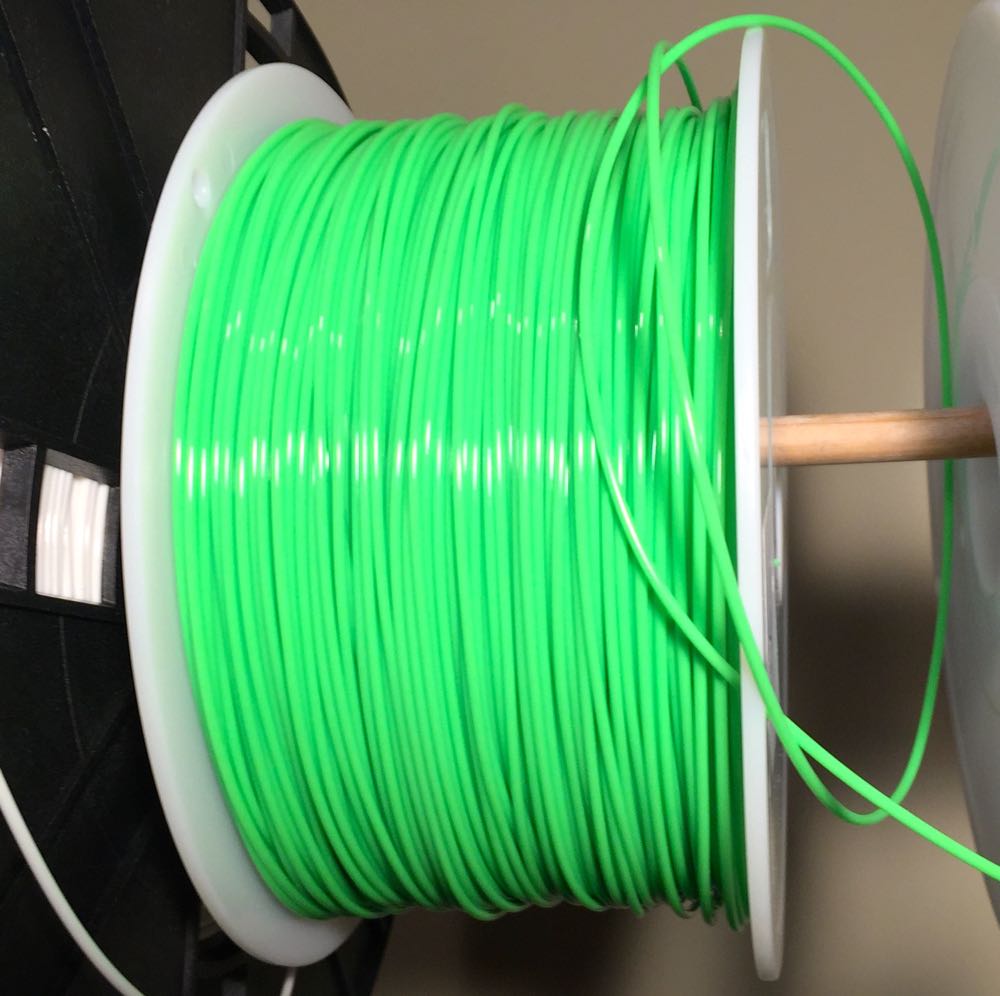While most 3D printer manufacturers would prefer you use their in-house plastic filament in their equipment, we’re wondering whether filament is nearing “commodity” stage.
To be sure, some machines are tuned specifically for the manufacturer’s chemical and mechanical filament formulation. Thus, they guarantee proper results only when using their materials. But that doesn’t stop many personal 3D printer operators from trying third party filament.
In fact, a large and increasing number of 3D printer filament operations have popped up. Some are offshoots of existing plastic manufacturing businesses, while others have started from scratch. Some merely import generic filament from Asia and apply their own branding.
Some operators seek the lowest cost filament by searching through the vendors’ offerings. Today you can obtain decent one kilogram spools for as low as USD$20, although some printer manufacturer’s filament is far more expensive.
To be a commodity, a product must be mostly consistent regardless of source, such that the key variance between offers is merely price per unit. Is that the case today in the world of 3D printer filament?
We don’t think so.
You’d be hard-pressed to explain how filament is consistent among vendors. Here are variations we’ve seen between filament offerings:
Dimensional consistency: to qualify as “quality” filament, a product must have very consistent diameter and roundness, otherwise prints become irregular – the printer is unaware that suddenly there’s a bit less (or more) filament entering the hot end.
Packaging: there is no official standard for packaging 3D printer filament. Some products may have differently-sized spools, which may or may not fit on your equipment. Some are carefully wrapped in air-sealed bags to keep out moisture, but some are less carefully packaged.
Toxicity: filaments are frequently colored using pigments, but in some cases these pigments contain lead or other toxic materials. Unfortunately the industry at large does not adhere to relevant standards, so products can differ significantly on toxicity, and it’s hard to tell by how much.
Materials: Filaments are not all made from the same material. While the personal 3D printing world began using ABS and PLA plastics, today we see numerous other materials becoming more common, including HIPS, Nylon and even ULTEM. There’s also composite filaments that are a mix of a polymer and, well, anything that can be powdered, such as metals, wood or other substances. We’ve even seen a new polymer, Amphora, developed specifically for 3D printing. Differences in the chemical formula making up the filament can result in different printing parameters, particularly extrusion temperatures.
Colors: Yes, you can obtain “red” filament. But is it actually the same “red” as from another manufacturer? Is it the same from the SAME manufacturer? That’s not always the case, and thus coloration is a property that must be carefully inspected from any vendor.
So as far as we’re concerned, plastic filament for personal 3D printers is not a commodity. There are still far too many variables in play. You can’t say, “this filament is good because it’s cheap”, because you also have to ask the question, “but what qualities does it have?”


